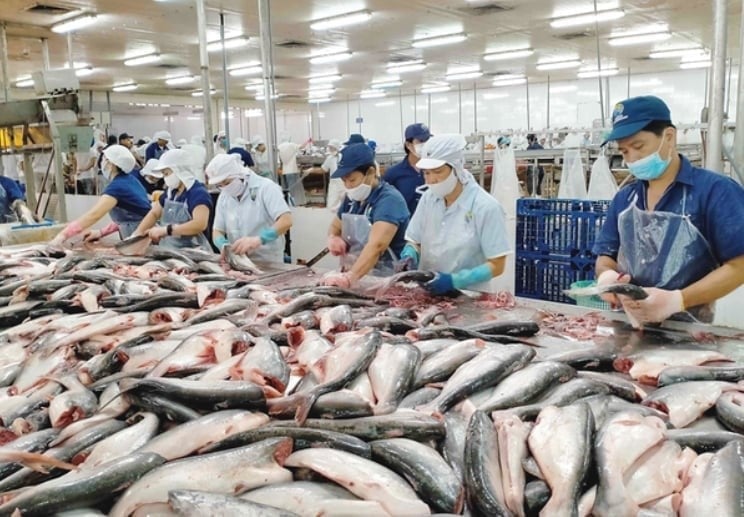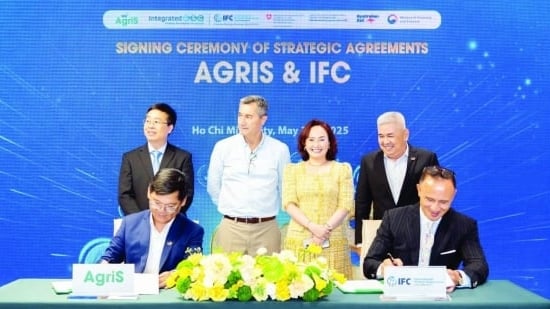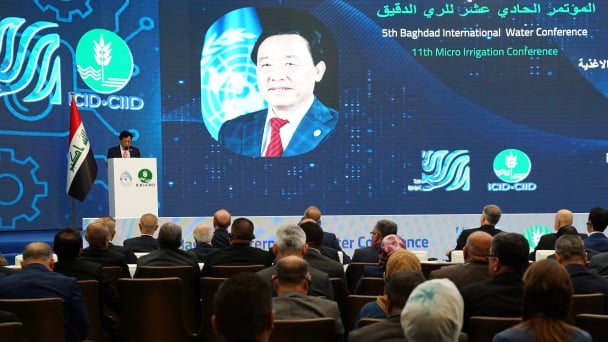June 6, 2025 | 10:10 GMT +7
June 6, 2025 | 10:10 GMT +7
Hotline: 0913.378.918
June 6, 2025 | 10:10 GMT +7
Hotline: 0913.378.918
According to the Multidisciplinary Digital Publishing Institute (MDPI, 2024) in Switzerland and the Fish Protein Hydrolysate Market Report (2024), seafood by-products, including skin, scales, and viscera, contain on average 30–40% protein. These protein-rich materials have contributed to driving the global fish protein hydrolysate market from USD 328.94 million in 2024 toward a projected USD 473.04 million by 2034. The data highlights a rapidly growing demand for functional ingredients derived from fish.
The Food and Agriculture Organization of the United Nations (FAO, 2023) stated that Vietnam and other Asian countries discard nearly 100,000 tons of fish by-products annually, including skin, scales, and viscera. However, less than 5% of that volume is put into deep processing.
Meanwhile, from 1 ton of fish scales, it is possible to extract 300–400 kg of protein, equivalent to raw materials worth tens of millions of dong before undergoing further processing.
In China, such by-products have already become critical raw materials for “lactic acid fermentation lines,” which are used to produce bioactive peptides, unlocking a functional food market worth hundreds of millions of USD annually.

Statistics in Vietnam show that the amount of fish by-products discarded annually is up to hundreds of thousands of tons, but only less than 5% of that volume is utilized for deep processing.
In Shanxi, China, traditional fermentation tanks for snakehead and herring have been replaced by enzymatic fermentation lines. In 2023, Chongqing Business University collected by-products from these fish species and applied exogenous enzymes to hydrolyze them, generating peptides in the 500–2,000 Da range with antioxidant, ACE-inhibitory, and antibacterial properties.
In Kagoshima (Japan), tuna by-products are enzymatically treated with pepsin and trypsin to produce peptides that exhibit over 65% ACE inhibition, indicating strong potential for cardiovascular and digestive health support. Certified as Generally Recognized as Safe (GRAS) in 2024, Japanese fish peptides have rapidly entered the functional food market, targeting the reduction of blood lipids and regulation of blood pressure.
This is a model that Vietnam should learn. By utilizing coastal fish by-products and investing in enzymatic fermentation facilities, the country could establish a supply of bioactive-rich, clean raw materials for the functional food industry.
While exogenous enzymes often require costly imports, lactic acid fermentation technology utilizes native ferments, significantly reducing initial investment costs. According to AFAST (2024), the semi-automated approach, combined with lactic acid fermentation, is an advanced solution increasingly adopted by Asian enterprises to produce amino acids and bioactive peptides from seafood by-products without the need for costly systems.
In Japan, fermentation tanks for curry, soy sauce, and miso are a familiar sight. According to Tokyo University of Marine Science and Technology (2023), Lactobacillus plantarum and Lactococcus lactis strains isolated from traditional fermentation tanks are capable of breaking down fish proteins into peptides rich in branched-chain amino acids (BCAAs) and essential amino acids. These compounds contribute to end products with enhanced antioxidant and antimicrobial properties.

Traditional miso and soy sauce fermentation tanks, where the signature flavors of Japanese soy sauce and miso are born. Photo: wami-japan.
Meanwhile, in Shanxi (China), a research team blended minced fish by-products with corn bran or soybean residue and introduced lactic ferments derived from fish vinegar. This approach shortened the fermentation period from 48 to 24 hours and increased the content of bioactive peptides by 1.8 times compared to natural processes.
In Shanghai, the Institute of Food Technology (2024) emphasized that one of the greatest advantages of lactic acid fermentation is its cost efficiency. The process requires only stainless steel tanks and a mixing system, eliminating the need for irradiation lamps or specialized cooling systems. At a semi-industrial scale, the system can process 1–2 tons of by-products per day, ensuring a stable peptide output.
In Central Vietnam, according to the Vietnam Association of Functional Foods (2025), a pilot facility has applied lactic acid fermentation technology to 1 ton of fish by-products, yielding 18–20 kg of peptides with approximately 8.5% bioactive content, sufficient to produce thousands of functional food capsules per batch.
These facts demonstrate that with access to indigenous lactic ferments and pilot-scale fermentation workshops, Vietnam can extend the seafood value chain, creating new livelihoods for fish farmers and processing enterprises.
Globally, seafood by-products are likened to “diamonds” of the functional food industry. Refined herring peptides from Shanxi are priced at USD 300–400/kg, while the Japanese market is valued at billions of dollars annually. In Central Vietnam, fermenting 1 ton of fish by-products yields 18–20 kg of peptides with 8.5% bioactivity, equivalent to nearly 20 kg of high-quality raw material for functional food production. If a "Vietnamese Seafood Peptide" brand can achieve international certification, it would open the door to exports with values 5-10 times higher than those of the domestic market.
Translated by Thu Huyen

(VAN) TTC AgriS and IFC signed a strategic partnership to develop a sustainable agricultural value chain, aiming to achieve the Net Zero target by 2035.

(VAN) Seafood by-products are opening a new path, combining green growth and technological innovation to enhance the industry's value.

(VAN) Mr. Nguyen Thanh Cong, Vice Chairman of the Son La Provincial People's Committee, reflects on Son La’s journey from barren hills to fruitful orchards after a decade of hard work.

(VAN) FAO’s Director-General addresses the 5th Baghdad International Water Conference.
/2025/05/26/1716-4-nongnghiep-191706.jpg)
(VAN) Chain linkages, technological innovation, and raw material zoning are three strategic pillars for the coconut industry to strongly develop and elevate its position on the global agricultural map.
![Advanced mariculture – an inevitable trend: [4] Accompanied by scientists](https://t.ex-cdn.com/nongnghiepmoitruong.vn/608w/files/sohk/2025/05/13/1941-pgsts-vo-van-nha-140958_717.jpg)
(VAN) According to Assoc. Prof. Dr. Vo Van Nha, Director of the RIA III, the development of advanced offshore mariculture is no longer an option but an essential path for Vietnam’s fisheries sector.